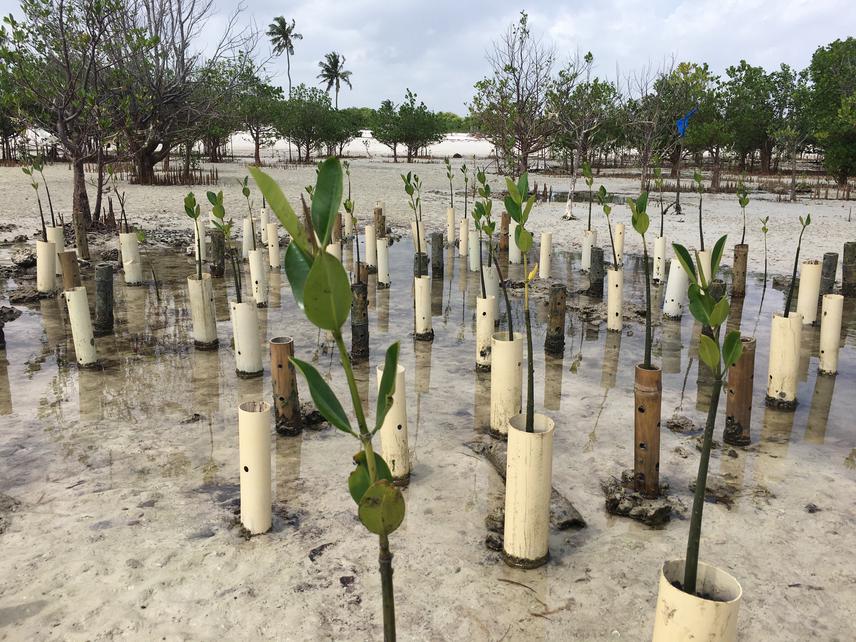Josphat Gacoki Nguu
Traditional mangrove restoration methods work best under normal ecosystem conditions. Once these conditions change and become extreme such as erosion caused by sea-level rise, an alternative method needs to be deployed. Gazi Bay is experiencing increased shoreline erosion and is rendering local community efforts of mangrove restoration futile. Therefore, Riley Encasement Method, an enhanced restoration method is sought to help resolve restoration issues. The end goal is increasing restoration success which translates to reduced mangrove degradation and shoreline erosion.

Four month old seedlings.
Sea level rise caused by climate change is changing the dynamics of shoreline evident by recently increased shoreline erosion. This poses a difficulty to restoration activities such as those carried in mangroves whereby due to the high wave energy the seedlings or propagules get washed or drowned. To remedy this, an enhanced restoration technique is sought to counter the wave action and is sufficient to allow the establishment of shoreline mangrove forests. Reference work of this nature has been carried out in Hawaii and Florida by Kent in 1999 with impressive results. In Gazi Bay which is the project area, the technique has not been applied despite is replicability.
The Gazi Bay project area has an active local community conservation group called Mikoko Pamoja. The group has created a niche in protecting mangrove and trading the carbon credits from the mangrove blue ecosystem in the voluntary carbon market. The main challenge though has been the failure to successfully plant 4000 seedlings each year in their target area and this compromises the qualification for quantifiable carbon credits. This enhanced technique aims to remedy this and possibly replicate it to other erosion areas along the coastline. Additionally, the work aims to equip local communities with alternative restoration skills.
Restored mangrove ecosystem return to providing goods and services such as protecting us from storm surges, providing habitat for fish and other wildlife, sequestering carbon thus mitigating climate change. In Gazi-Kenya mangroves are a source of wood and non-wood products that local communities depend on. Additionally, by restoring the mangroves al local and at global levels it will add to their cover and lead to the ecosystem being lifted from the IUCN RedList, where they are listed as highly threaten.